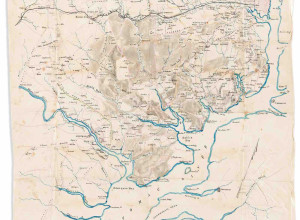Some Nick's Picks to Start the Year
I have decided to start the new year off with a few books that came to my attention a bit too late to make my holiday roundups, but which are eminently worthy of notice all the same. Think of each one as a little present for yourself; you won't be disappointed.
The Horse: From Cave Paintings to Modern Art, by Jean-Louis Gourand, Michel Woronoff, Henri-Paul Franefort, and others; Abbeville Press, 400 pages, with 328 full-color illustrations, boxed, $150.
So you didn't get a pony for Christmas, too bad, but you can still treat yourself to what is easily the most magnificent art book devoted to the horse that I have ever seen, and the best part is you don't have to feed it or clean out its stall. Arguably the most beautiful animal in nature, the horse has inspired creative expression for many centuries, with magnificent examples in a multitude of media to be found in the prehistoric caves of Lascaux, the sands of Mesopotamia, and depicted over the generations by cultures as varied as Babylonian, Scythian, Chinese, Greek, and Roman. First published in France in 2008, this remarkable book, newly translated and issued in a lovely boxed edition, pays homage to the horse in all its glory, with more than 300 color illustrations and thirteen learned essays to make the case. The horse, John Louis Gourand writes, is "undoubtedly the most frequently represented living being in art after man himself, from the very earliest of times." Abbeville Press lives up to its well-earned reputation for producing art books in the grand tradition; the illustrations are superbly chosen, and vividly reproduced.
George Washington's America: A Biography Through Maps, by Barnet Schecter; Walker, 304 pages, $67.50.
Known most famously, of course, as hero of the Revolution and first President of the United States, George Washington also worked as a surveyor early in his life, and had a lifelong relationship with maps. At his death, many of the charts he had owned and used were bound into an atlas that eventually made its way to the Map Collection of Sterling Library at Yale University, a corpus that provides the framework for this most interesting examination. In addition to the maps he purchased, Washington drew a number of his own that have survived. "These visual images," historian Robert Schecter writes, "place us at the scene of his youthful ambition and his later battles--in the landscapes and on the waterways that were the theater of war in Britain's North American colonies, and that sparked the imagination and desires of the preeminent founder of the United States." Once independence was secured, the maps helped shape Washington's "vision of America as 'a rising empire in the New World.'"
The Encyclopedia of New York City: Second Edition, edited by Kenneth T. Jackson; Yale University Press, 1,561 pages, $65.
First published in 1995, this wonderful, one-volume encyclopedia about the city that never sleeps was one of the most successful books in the long history of the Yale University Press, prompting the preparation of this completely updated effort. The World Trade Center no longer anchors the Manhattan skyline, to cite just one major change, and Bernie Madoff was not a household name back then. The E-Z pass hadn't been invented yet either, and the New York Giants hadn't shocked the New England Patriots in the 2008 Super Bowl. These are just a few of the 800 entries to be added to the mix, bringing the total to 5,000. Each is written by an acknowledged authority, be it in sports, entertainment, finance, architecture, or art, and each is a delightful little essay in its own right about every manner of New York person, place, institution, and curiosity, spanning pre-history to the present, and covering all five boroughs.This is one of my very favorite reference books, all spiffed up, and relevant as ever.















